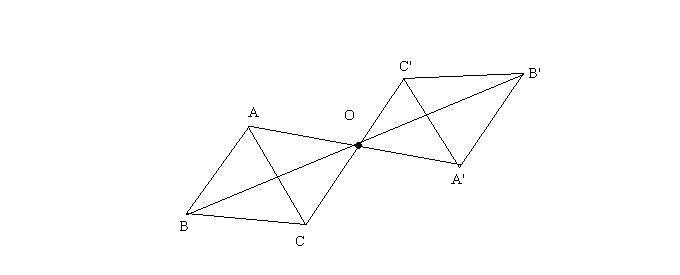Dato il triangolo
con i vertici del triangolo e si prolunghi ciascun segmento in modo che
Dimostrare che il triangolo
 Ipotesi
Ipotesi Dimostrazione
Tesi:
I triangoli
di conseguenza
Analogamente
Analogamente
In conclusione i triangoli
Dato il triangolo
 Ipotesi
Ipotesi Dimostrazione
Tesi:
di conseguenza
5 stelle
4 stelle
3 stelle
2 stelle
1 stella
0
0
3
0
0
c'è un refuso: immagino che dove è scritto ABO^EA'BO^ voleva essere analogo al rigo sotto AOB^EA'OB'^
io non capisco perchè AOB sia congruente a A'OB' perchè trovo solo la congruenza tra BO e B'O e tra AC e A'C'... mi manca qualcosa?
ritengo molto utile queste schede che sono contenute in questa sezione...spero solamente che possa essere utile anche ad altri. grazie
Sei già abbonato? Accedi

3,99€
 Accedi a tutti gli appunti
Accedi a tutti gli appunti
 Tutor AI: studia meglio e in meno tempo
Tutor AI: studia meglio e in meno tempo
 Nessuna pubblicità sul sito
Nessuna pubblicità sul sito
 100€ di bonus su Ripetizioni.it
100€ di bonus su Ripetizioni.it
Disdici quando vuoi
7,99€
 5 appunti ogni mese
5 appunti ogni mese
 Tutor AI: studia meglio e in meno tempo
Tutor AI: studia meglio e in meno tempo
 Nessuna pubblicità sul sito
Nessuna pubblicità sul sito
 100€ di bonus su Ripetizioni.it
100€ di bonus su Ripetizioni.it
Disdici quando vuoi
12,79€
 3 appunti ogni mese
3 appunti ogni mese
 Tutor AI: studia meglio e in meno tempo
Tutor AI: studia meglio e in meno tempo
 Nessuna pubblicità sul sito
Nessuna pubblicità sul sito
 100€ di bonus su Ripetizioni.it
100€ di bonus su Ripetizioni.it
Disdici quando vuoi
Hai cambiato idea e vuoi dare il consenso?
Vuoi copiare questo testo?